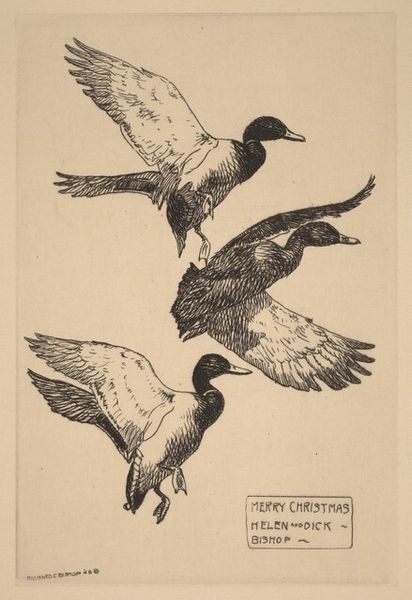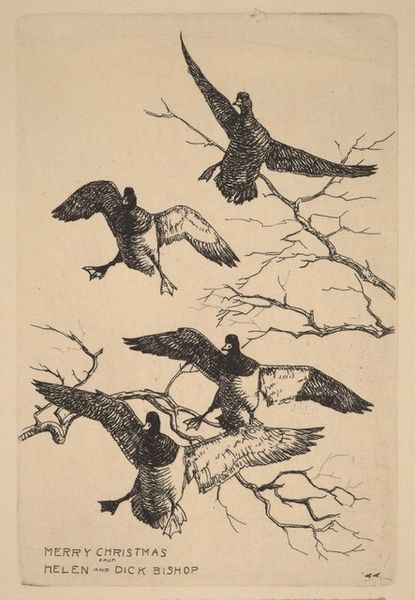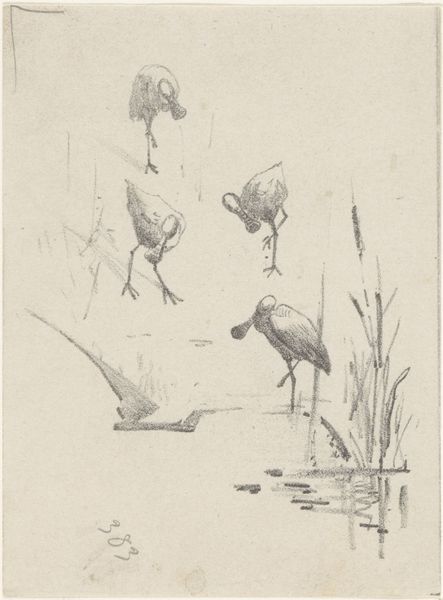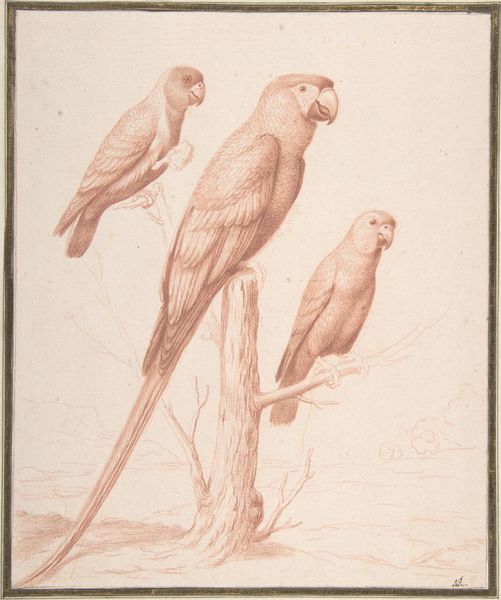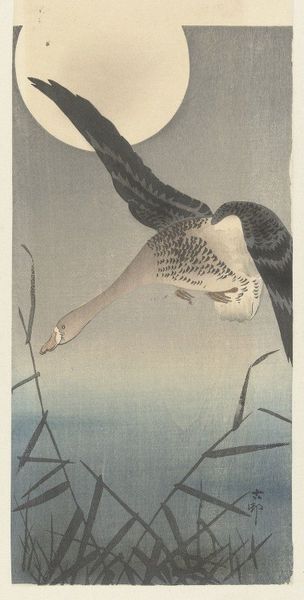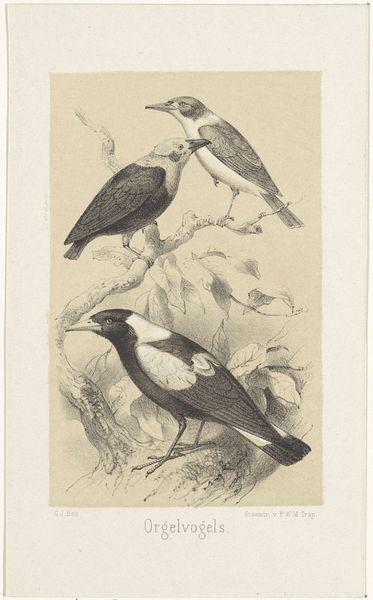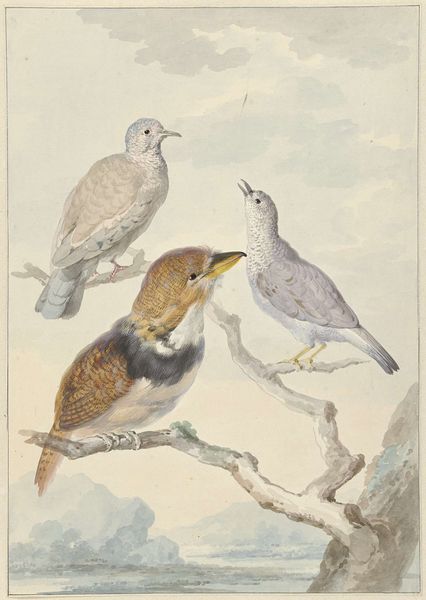
Copyright: Public Domain: Artvee
Curator: We are looking at "Sandpipers at Sickle Moon," a woodblock print crafted by Ohara Koson, sometime between 1900 and 1910. Editor: My first thought? Eerily beautiful. The muted palette—grey, pale blue, the crescent moon hanging high—creates this palpable sense of tranquility, even melancholy. Curator: It's a fine example of shin-hanga, "new prints," movement. We can understand the artist's intent through Japan’s social climate—Koson revitalizes traditional ukiyo-e for a modern audience. This blending is an intentional bridging of art history with cultural change. The use of these elegant avian figures gives visibility to themes of nature, but it is about how these are received against the growth of industrialisation at the time. Editor: Absolutely. And how does that shift impact the way the landscape itself is perceived? It's no longer just a backdrop, but a site of both beauty and increasing threat. I find that it creates the tension between what remains and the industrial boom, thus turning it into the symbol of the moment’s sociopolitical context. Curator: And further how Koson's work entered Western markets reveals an interest in exporting ideas of Japan. The question of authenticity comes into play – is this 'real' Japan or a construct made to sell? Editor: It certainly prompts reflections on Orientalism and the art market itself. Does the popularity diminish the artistry, or amplify its cultural impact through greater exposure? Also, what’s striking to me is the tension between the flat planes of color and the surprising depth achieved, particularly in the rendering of the waves. There's almost an abstract quality that hints at impending changes while reminding the viewers that we cannot hold on to time or history. Curator: I agree that the dynamic portrayal of ocean makes an emotional appeal about how progress feels to a community undergoing changes. This speaks volumes regarding class struggles, socio-political power structures. The way the bird call goes against the backdrop evokes cultural memory to the current society’s political anxieties, giving representation to their identities in these works of art. Editor: Yes. Considering "Sandpipers at Sickle Moon" isn't just about aesthetic appreciation. It's a lens for exploring the intersections of art, identity, and politics. Curator: Exactly! Koson’s print shows us how aesthetics are a platform to consider deeper histories, bringing new conversations around art and our present society.
Comments
No comments
Be the first to comment and join the conversation on the ultimate creative platform.


